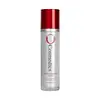What's inside
What's inside
 Key Ingredients
Key Ingredients

 Benefits
Benefits

 Concerns
Concerns

 Ingredients Side-by-side
Ingredients Side-by-side

Water
Skin ConditioningCocamidopropyl Betaine
CleansingSodium Lauroyl Sarcosinate
CleansingGlycerin
HumectantPEG-7 Glyceryl Cocoate
EmulsifyingPersea Gratissima Fruit Butter
EmollientPEG-120 Methyl Glucose Dioleate
EmulsifyingSodium Lauroyl Glutamate
Acetyl Octapeptide-3
HumectantSodium Hyaluronate
HumectantDimethylmethoxy Chromanol
AntioxidantThermus Thermophillus Ferment
Skin ConditioningNiacinamide
SmoothingAloe Barbadensis Leaf Juice
Skin ConditioningCinnamomum Zeylanicum Bark Oil
MaskingMyristica Fragrans Kernel Oil
MaskingAlcohol Denat.
AntimicrobialZeolite
AbsorbentPhenoxyethanol
PreservativeCaprylyl Glycol
EmollientDisodium EDTA
Sodium Acrylate/Sodium Acryloyldimethyl Taurate Copolymer
Emulsion StabilisingIsohexadecane
EmollientPolysorbate 80
EmulsifyingWater, Cocamidopropyl Betaine, Sodium Lauroyl Sarcosinate, Glycerin, PEG-7 Glyceryl Cocoate, Persea Gratissima Fruit Butter, PEG-120 Methyl Glucose Dioleate, Sodium Lauroyl Glutamate, Acetyl Octapeptide-3, Sodium Hyaluronate, Dimethylmethoxy Chromanol, Thermus Thermophillus Ferment, Niacinamide, Aloe Barbadensis Leaf Juice, Cinnamomum Zeylanicum Bark Oil, Myristica Fragrans Kernel Oil, Alcohol Denat., Zeolite, Phenoxyethanol, Caprylyl Glycol, Disodium EDTA, Sodium Acrylate/Sodium Acryloyldimethyl Taurate Copolymer, Isohexadecane, Polysorbate 80
Water
Skin ConditioningCaprylyl/Capryl Glucoside
CleansingButyrospermum Parkii Oil
EmollientGlycerin
HumectantMethylpropanediol
SolventDisodium Cocoyl Glutamate
CleansingCitric Acid
BufferingPentylene Glycol
Skin ConditioningSclerotium Gum
Emulsion StabilisingXanthan Gum
EmulsifyingCaprylyl Glycol
EmollientPropanediol
SolventSodium Citrate
BufferingMannitol
HumectantSaccharide Isomerate
HumectantXylitol
HumectantBenzotriazolyl Dodecyl P-Cresol
UV AbsorberRhamnose
HumectantTocopherol
AntioxidantHelianthus Annuus Seed Oil
EmollientAminoethanesulfinic Acid
AntioxidantSodium Metabisulfite
AntioxidantParfum
MaskingWater, Caprylyl/Capryl Glucoside, Butyrospermum Parkii Oil, Glycerin, Methylpropanediol, Disodium Cocoyl Glutamate, Citric Acid, Pentylene Glycol, Sclerotium Gum, Xanthan Gum, Caprylyl Glycol, Propanediol, Sodium Citrate, Mannitol, Saccharide Isomerate, Xylitol, Benzotriazolyl Dodecyl P-Cresol, Rhamnose, Tocopherol, Helianthus Annuus Seed Oil, Aminoethanesulfinic Acid, Sodium Metabisulfite, Parfum
Ingredients Explained
These ingredients are found in both products.
Ingredients higher up in an ingredient list are typically present in a larger amount.
Caprylyl Glycol is a humectant and emollient, meaning it attracts and preserves moisture.
It is a common ingredient in many products, especially those designed to hydrate skin. The primary benefits are retaining moisture, skin softening, and promoting a healthy skin barrier.
Though Caprylyl Glycol is an alcohol derived from fatty acids, it is not the kind that can dry out skin.
This ingredient is also used as a preservative to extend the life of products. It has slight antimicrobial properties.
Learn more about Caprylyl GlycolGlycerin is already naturally found in your skin. It helps moisturize and protect your skin.
A study from 2016 found glycerin to be more effective as a humectant than AHAs and hyaluronic acid.
As a humectant, it helps the skin stay hydrated by pulling moisture to your skin. The low molecular weight of glycerin allows it to pull moisture into the deeper layers of your skin.
Hydrated skin improves your skin barrier; Your skin barrier helps protect against irritants and bacteria.
Glycerin has also been found to have antimicrobial and antiviral properties. Due to these properties, glycerin is often used in wound and burn treatments.
In cosmetics, glycerin is usually derived from plants such as soybean or palm. However, it can also be sourced from animals, such as tallow or animal fat.
This ingredient is organic, colorless, odorless, and non-toxic.
Glycerin is the name for this ingredient in American English. British English uses Glycerol/Glycerine.
Learn more about GlycerinWater. It's the most common cosmetic ingredient of all. You'll usually see it at the top of ingredient lists, meaning that it makes up the largest part of the product.
So why is it so popular? Water most often acts as a solvent - this means that it helps dissolve other ingredients into the formulation.
You'll also recognize water as that liquid we all need to stay alive. If you see this, drink a glass of water. Stay hydrated!
Learn more about Water